Posted by Wall Panels World on 17th Oct 2024
Alternatives To Tiles In Bathrooms | Best Tile Substitutes | Modern Interiors
Alternatives to Tiles in Bathrooms
Explore durable, cost-effective alternatives to traditional tiles for bathroom renovations. These options cater to different styles, budgets, and installation preferences.
Alternative Wall Materials
PVC Wall Panels
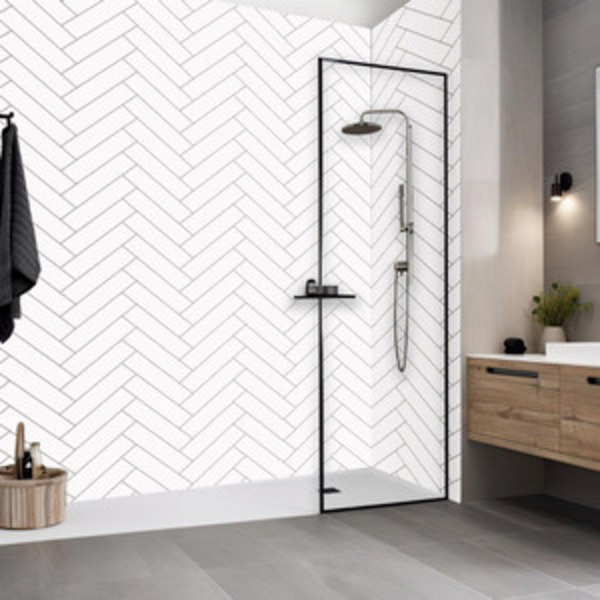
PVC (polyvinyl chloride) wall panels are waterproof sheets, ideal wall panels for the bathroom. They are often used as an alternative to tiles in areas that experience a lot of moisture, such as shower enclosures and around baths. PVC panels are designed to be easy to install and maintain, offering a wide variety of colours and patterns, including options that resemble natural materials like stone or wood.
Advantages
- Waterproof: Fully waterproof, making them suitable for wet areas like showers and around baths.
- Low cost: Less expensive than tiles both in terms of material and labour. They can often be installed by homeowners, reducing installation costs.
- Quick installation: Can be installed over existing surfaces, so there’s no need for demolition work, which reduces both time and cost.
- Variety of designs: Available in various patterns and colours, including realistic stone and wood effects.
- Low maintenance: Unlike tiles, PVC panels have no grout lines that require constant cleaning and are easy to wipe down.
- Space-saving: Thinner than traditional tiles, PVC panels don't encroach on room space, making them ideal for smaller bathrooms.
Disadvantages
- Appearance: PVC panels may not provide the same high-end, premium look as natural materials like stone or glass.
- Installation precision required: Panels must be installed carefully to avoid water ingress at joints or edges.
- Heat sensitivity: PVC can warp if placed too close to high heat sources, so careful planning is required around radiators or heated towel rails.
Waterproof Paint
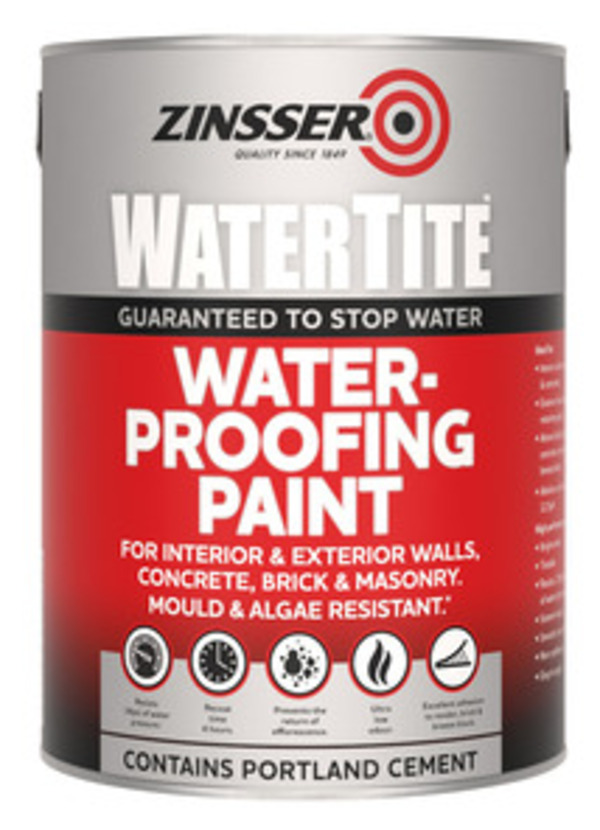
Waterproof paint is a coating that prevents moisture from penetrating surfaces. It’s commonly used on bathroom walls in areas where there is occasional moisture exposure, such as around sinks or on walls not in direct contact with water, like those outside shower enclosures. While waterproof paint can resist moisture and help prevent mould growth, it’s not typically used for areas with constant water exposure.
Advantages
- Affordable: One of the cheapest ways to refresh bathroom walls.
- Easy to apply: Suitable for DIY projects. Paint can be applied using basic tools like rollers and brushes.
- Wide variety of colours: Available in almost any colour, allowing for full customisation of your bathroom’s look.
Disadvantages
- Not for direct water exposure: Waterproof paint can’t withstand constant water exposure and is not recommended for inside showers or around baths.
- Regular maintenance: In humid environments like bathrooms, the paint may need to be retouched or repainted over time as it wears down.
- Surface preparation required: Surfaces need to be prepped and primed properly to ensure the paint adheres and remains effective over time.
Waterproof Wallpaper
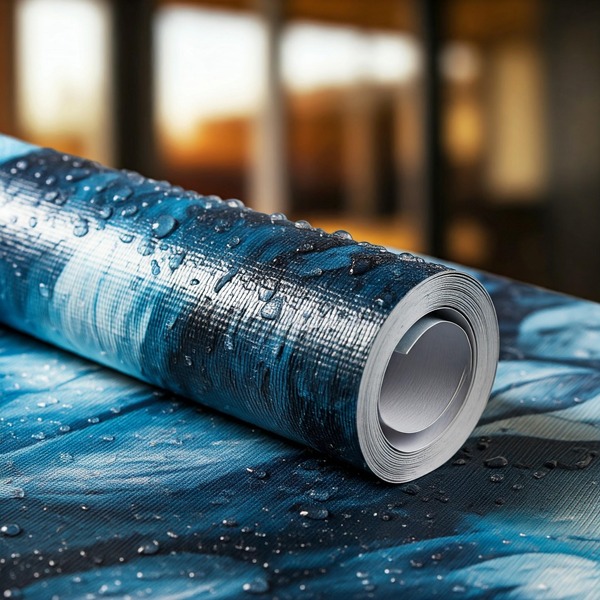
Waterproof wallpaper is a specially designed product made from materials like vinyl or coated with a waterproof layer. It’s suitable for bathrooms as it can withstand high levels of humidity. However, it should be used only in areas not directly exposed to water, such as near sinks or toilets. Waterproof wallpaper is typically easy to install and offers a stylish alternative to tiles.
Advantages
- Design options: Available in a wide range of designs, from subtle patterns to bold prints, making it a versatile design choice.
- Relatively inexpensive: Costs less than tiles and can provide a decorative finish.
- DIY-friendly: Can be installed by homeowners without the need for professional help.
Disadvantages
- Not suitable for high-moisture areas: Should not be used in shower enclosures or areas that get direct water exposure.
- Potential for peeling: Wallpaper may peel or bubble over time, especially in areas with fluctuating humidity levels if not installed properly.
- Less durable than tiles: Wallpaper may need to be replaced sooner than tiles due to wear and tear.
Glass Panels
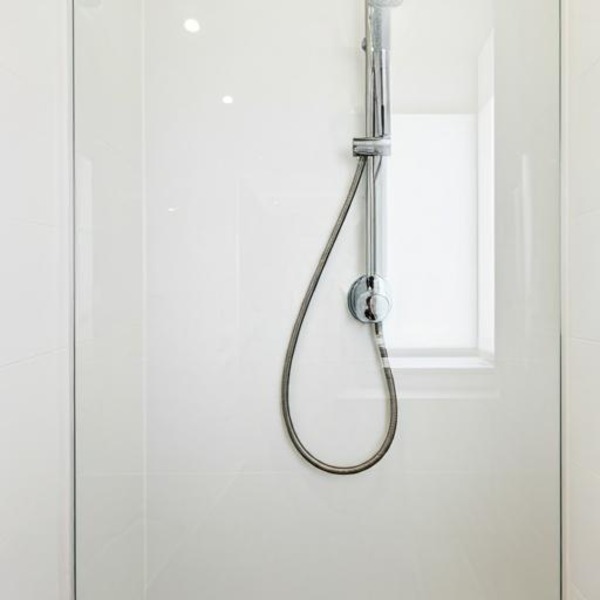
Glass panels are large, sleek sheets of toughened glass designed to cover bathroom walls, especially in showers and around baths. Toughened glass is much stronger than standard glass, making it a safe choice. These panels are fully waterproof, easy to clean, and give bathrooms a modern, minimalist look. They are often back-painted or frosted for a customised appearance. Installation of glass panels requires professional help due to the weight and complexity involved.
Advantages
- Luxurious appearance: Glass provides a high-end, modern look that enhances the visual appeal of bathrooms.
- Hygienic: Glass is non-porous, meaning it resists mould and bacteria and is easy to clean.
- Customisable: Glass can be frosted, back-painted, or printed with designs to suit the décor of your bathroom.
Disadvantages
- High cost: Glass panels are more expensive than other options like tiles or PVC panels, both in material and installation.
- Complex installation: Due to their weight and fragility, glass panels must be installed by professionals, adding to the overall cost.
- Potential for adjustments: The thickness of the glass may require modifications to fixtures or fittings.
Microcement
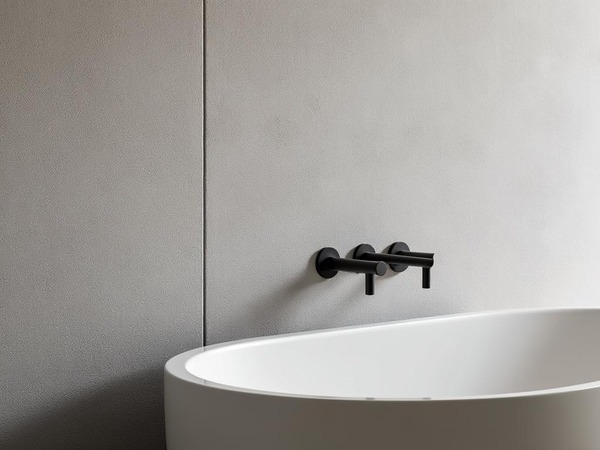
Microcement is a thin, seamless cement-based coating that is applied in multiple layers to create a smooth, waterproof surface. It is commonly used in wet rooms, walk-in showers, and other areas where a continuous, grout-free surface is desired. Microcement is highly customisable in terms of colour and texture, providing a modern, industrial look. Proper sealing is necessary to ensure full waterproofing.
Advantages
- Seamless finish: Microcement provides a smooth, continuous surface with no grout lines, reducing the risk of mould buildup.
- Durable and hardwearing: When properly sealed, microcement is highly resistant to wear and water damage.
- Customisable: Available in various colours and textures to suit different design styles, from minimalist to industrial.
Disadvantages
- Professional installation required: Microcement needs to be applied in several layers, which requires expertise to ensure even application and proper waterproofing.
- Time-consuming process: The installation involves applying multiple layers and allowing time for curing, which can extend the project timeline.
- Requires regular sealing: To maintain its waterproof properties, microcement must be sealed and resealed periodically.
Comparison of Wall Materials
| Material | Cost | Durability | Water Resistance | Installation | Maintenance |
|---|---|---|---|---|---|
| PVC Wall Panels | Low to Moderate | High | Excellent | DIY-Friendly | Low |
| Waterproof Paint | Low | Moderate | Limited | DIY-Friendly | High |
| Waterproof Wallpaper | Low to Moderate | Moderate | Limited | DIY with Experience | Medium |
| Glass Panels | High | High | Excellent | Professional Only | Low |
| Microcement | Moderate to High | High | Excellent | Professional Only | Medium |
| Tiles | Moderate to High | Very High | Excellent | Professional Recommended | Medium |
Flooring Considerations
When selecting bathroom flooring, consider factors such as slip resistance, water resistance, durability, and compatibility with underfloor heating systems. Vinyl flooring, rubber flooring, engineered wood, and cork flooring are popular choices, each offering different benefits. Proper installation is critical to prevent water damage, especially in high-moisture areas. Seek professional advice for materials that may require specialised handling, such as natural wood or complex installations.
Conclusion: PVC Wall Panels - The Optimal Tile Alternative
PVC wall panels are a practical and cost-effective alternative to traditional bathroom tiles. They are fully waterproof, easy to install, and available in a range of designs that suit both modern and traditional bathroom styles. While tiles are durable and add a classic look, PVC wall panels offer a simpler, lower-maintenance option that is well-suited for busy households. Their lower cost and quick installation make them an attractive choice for many homeowners.
